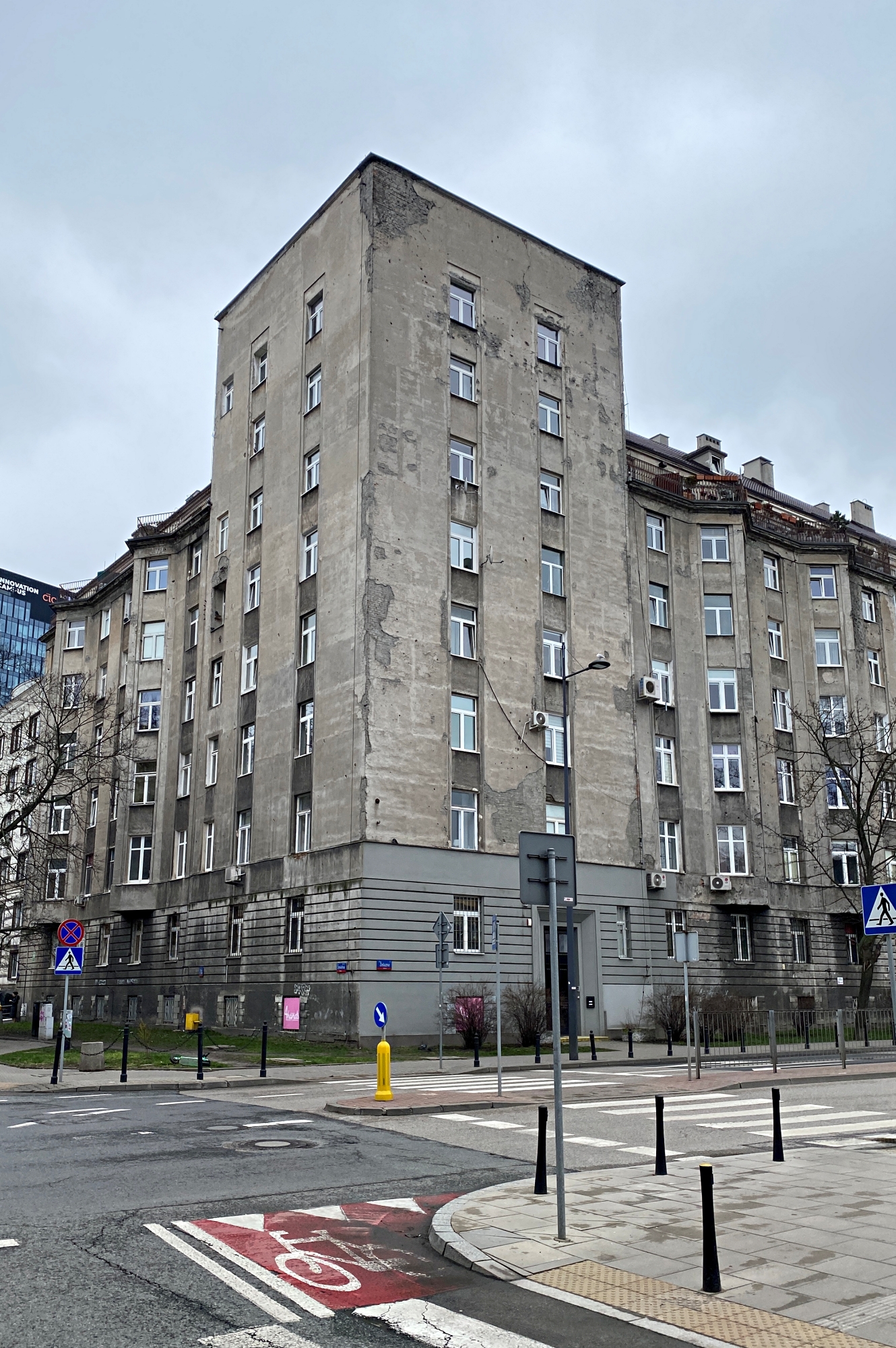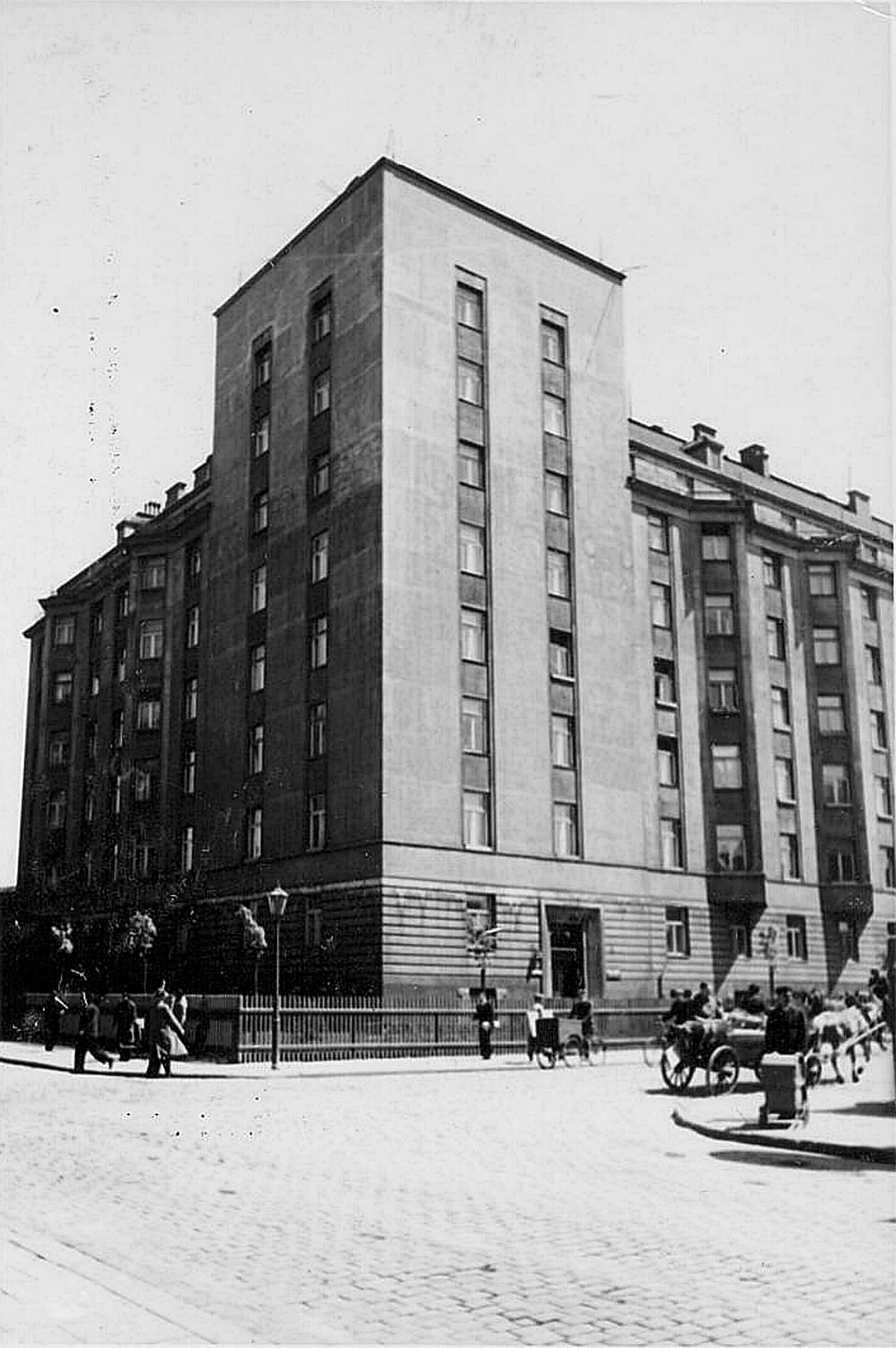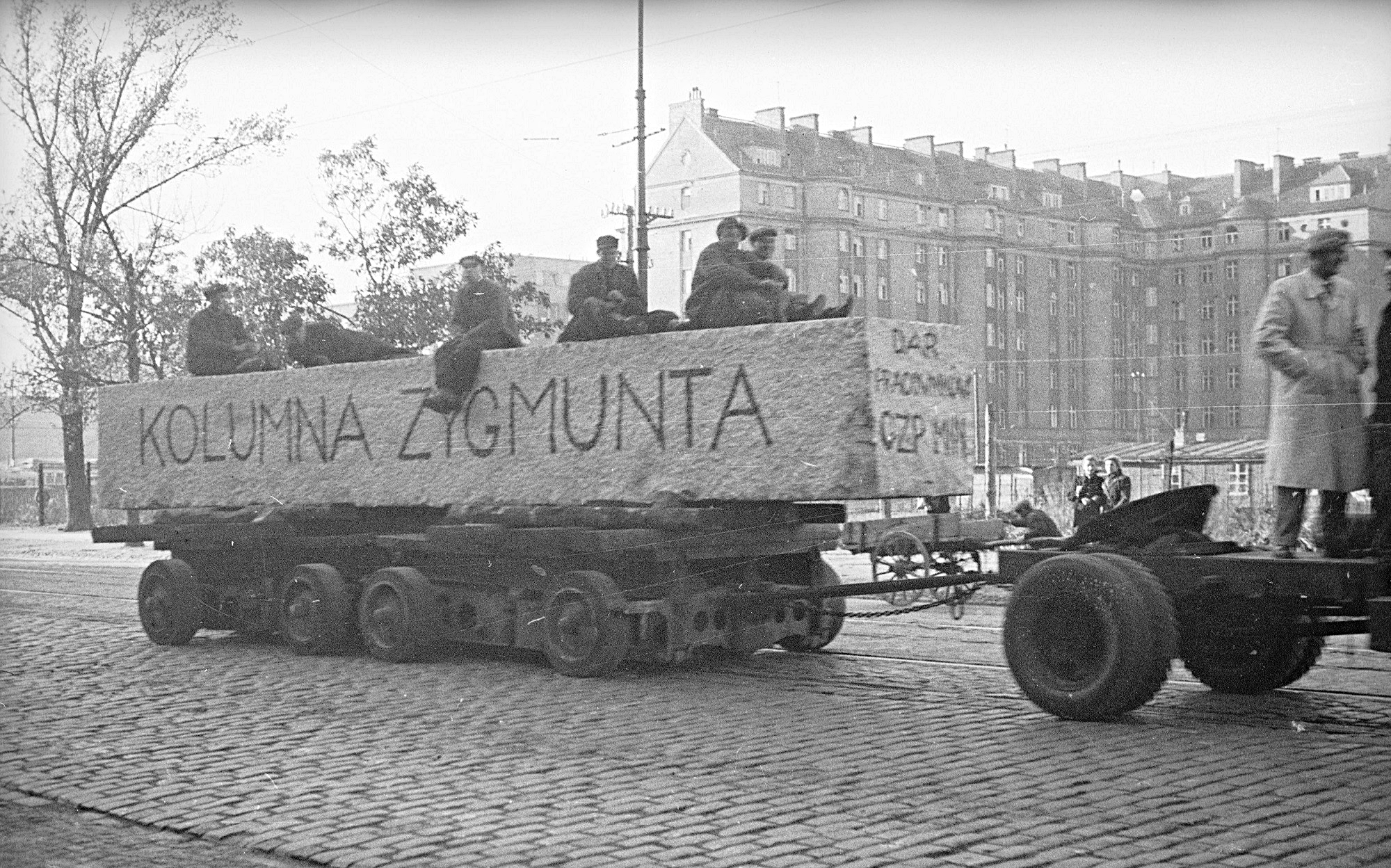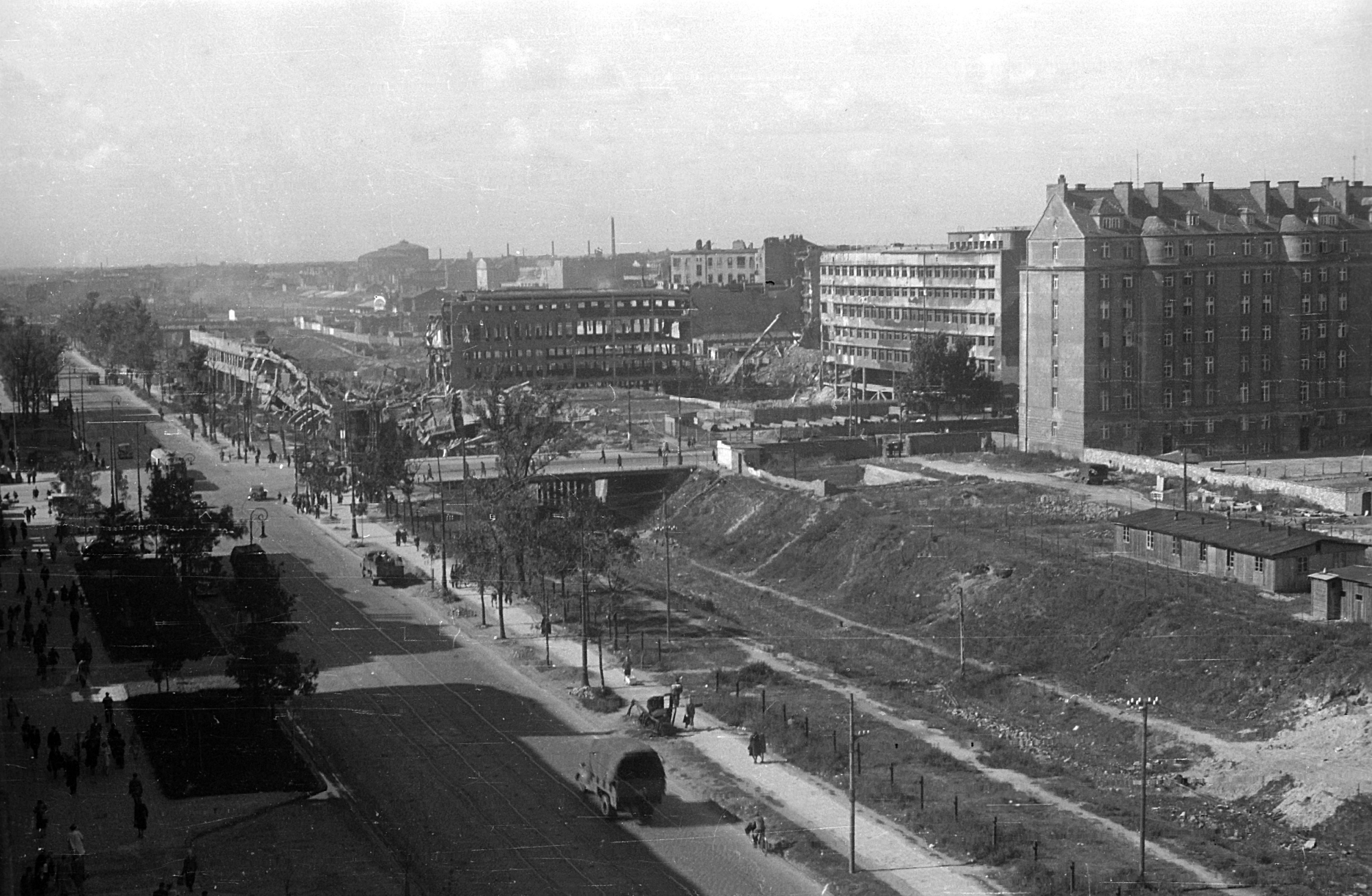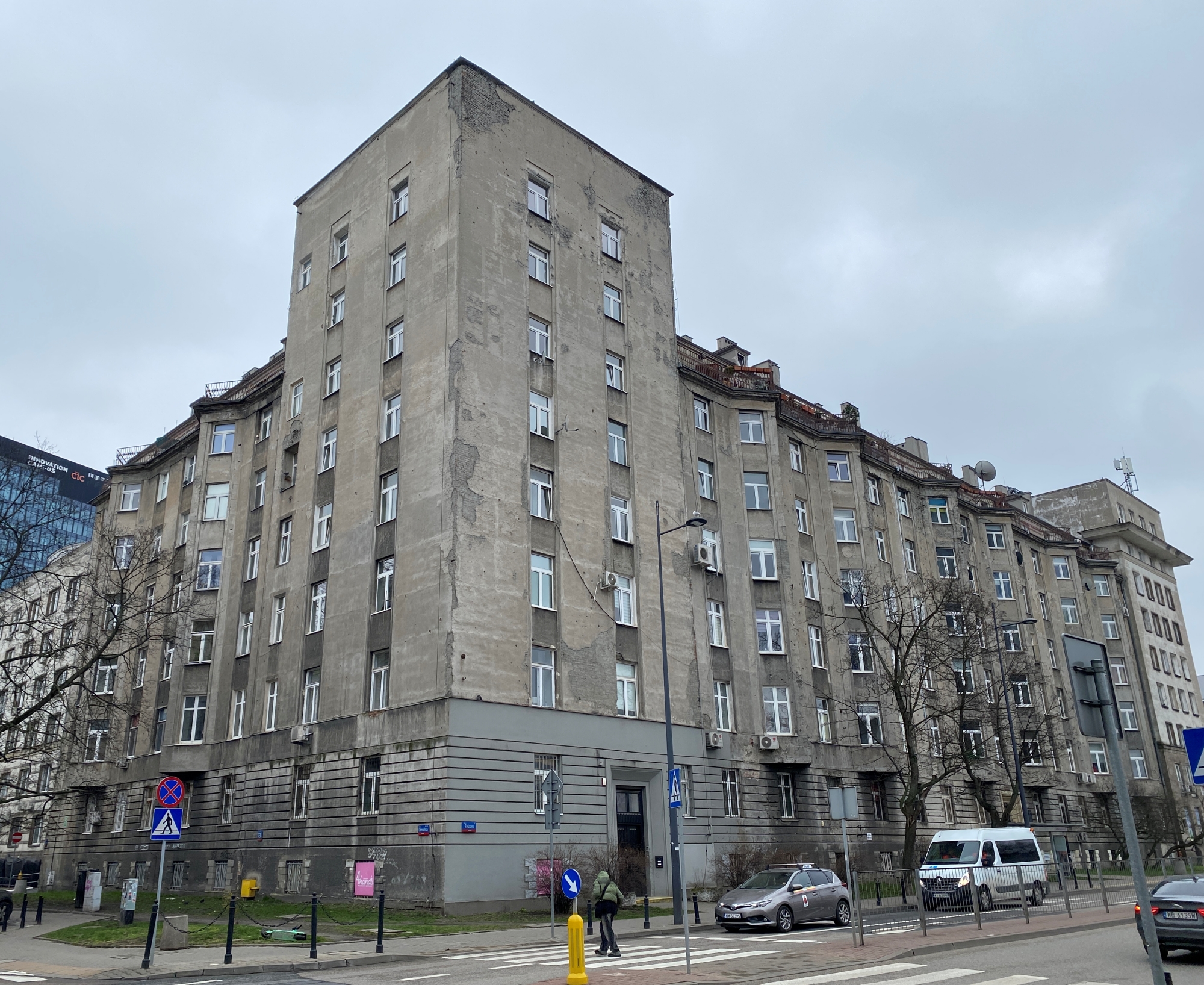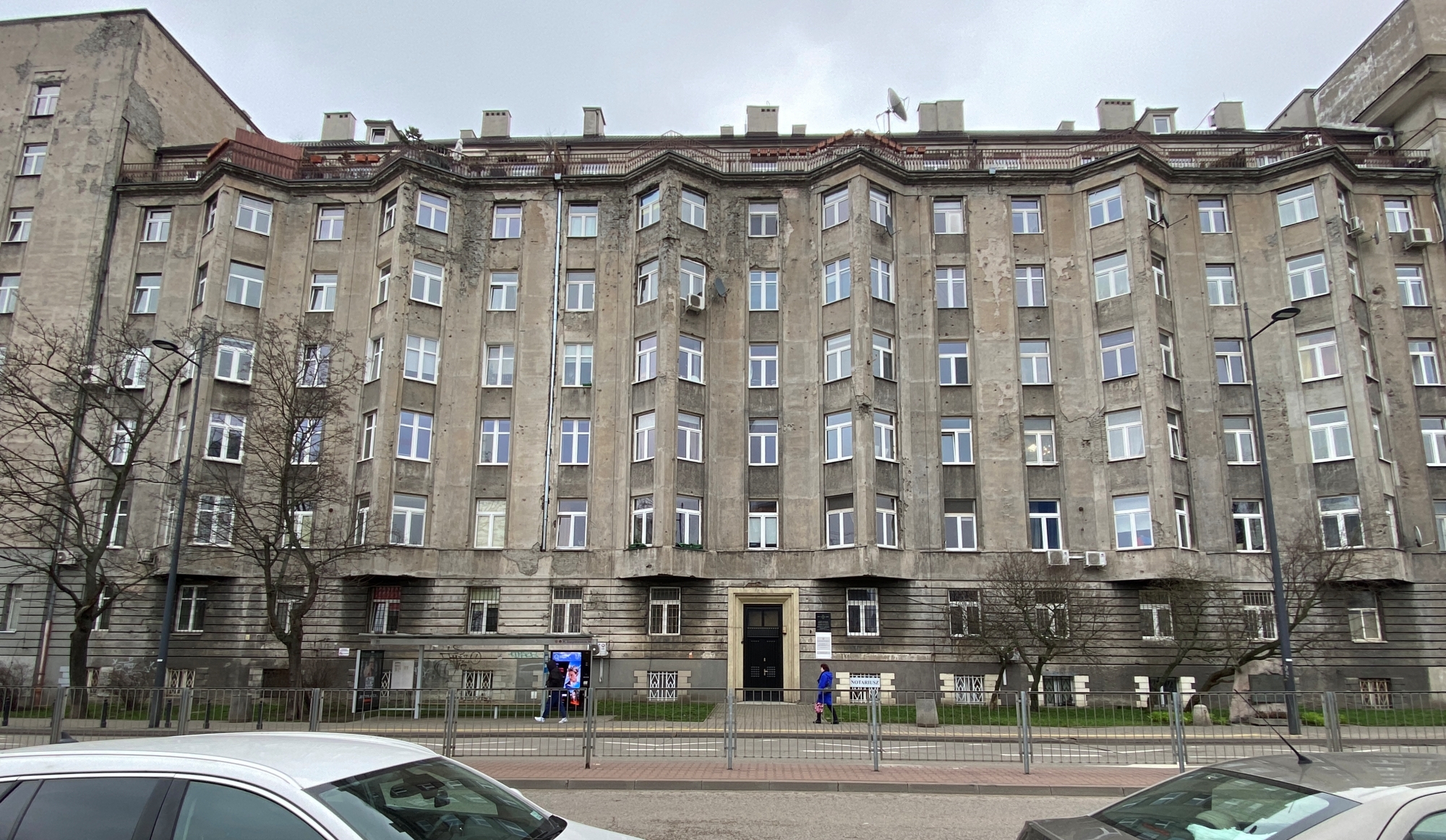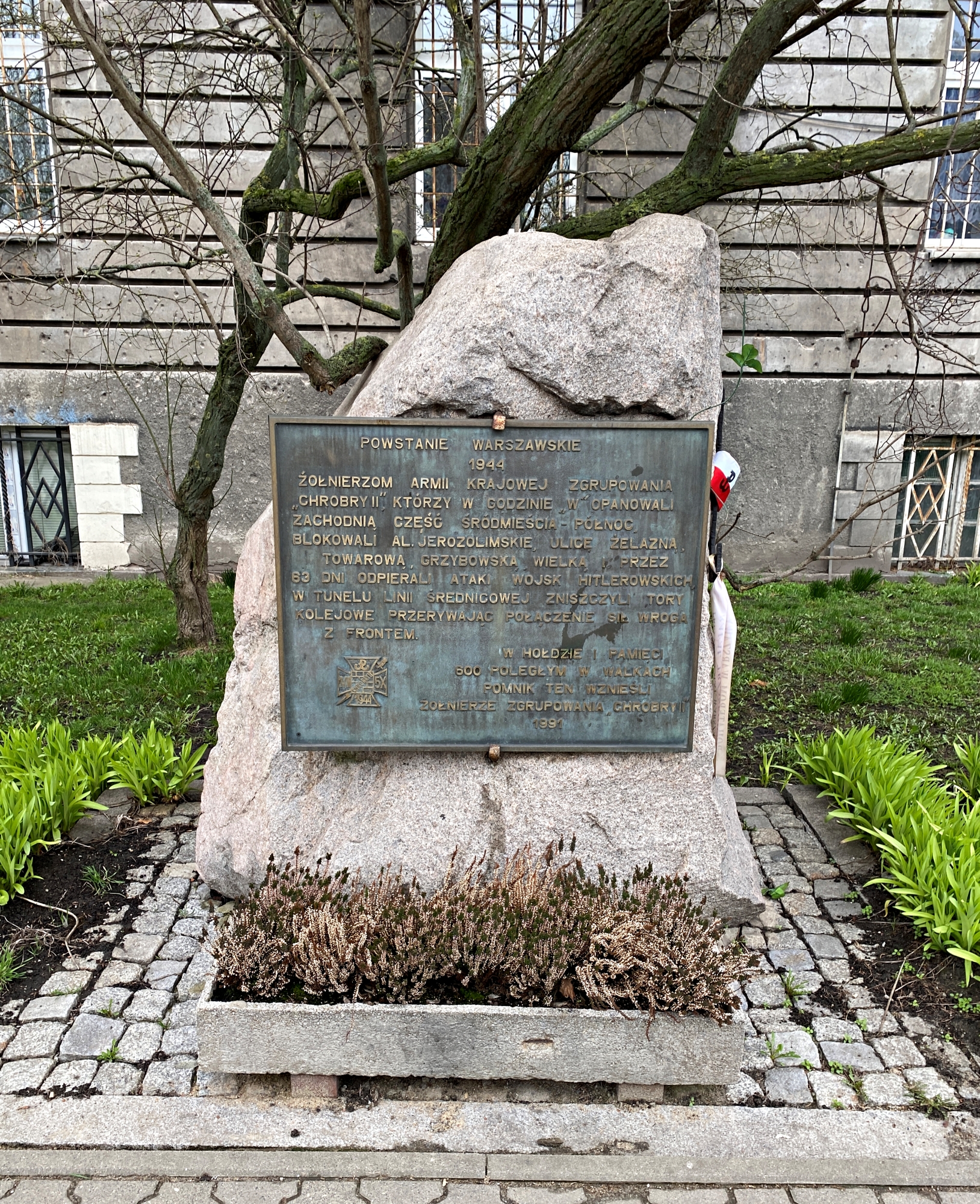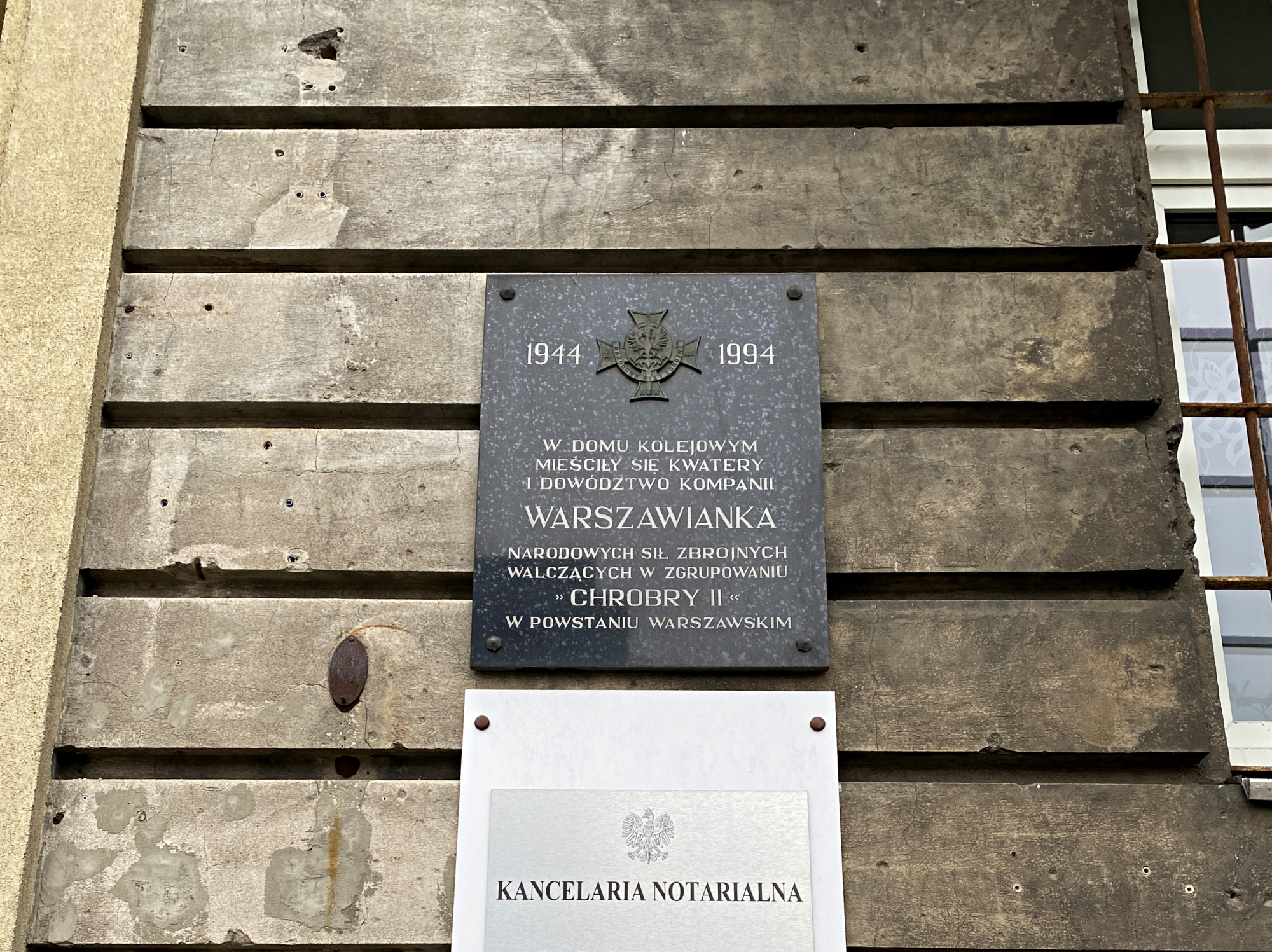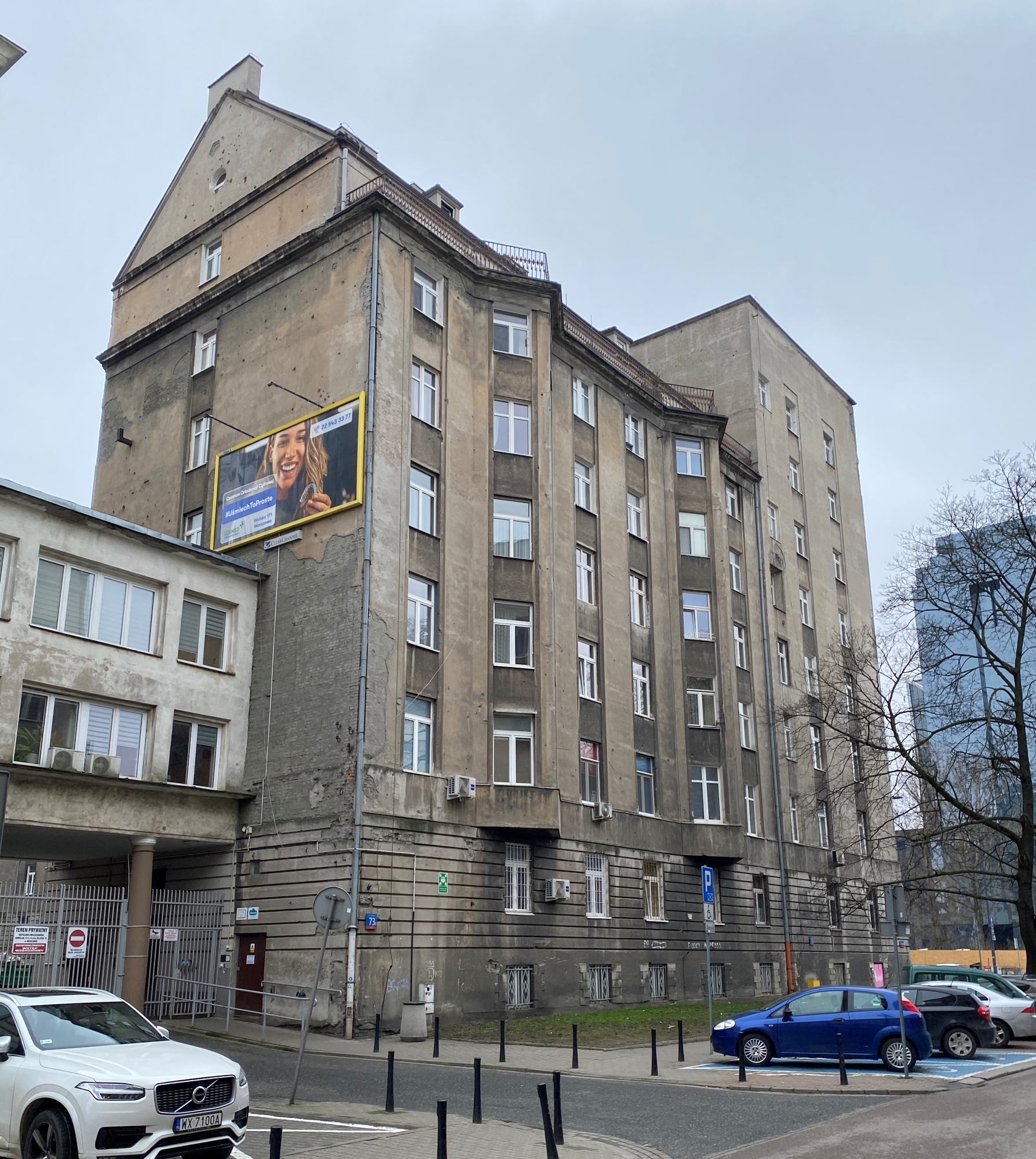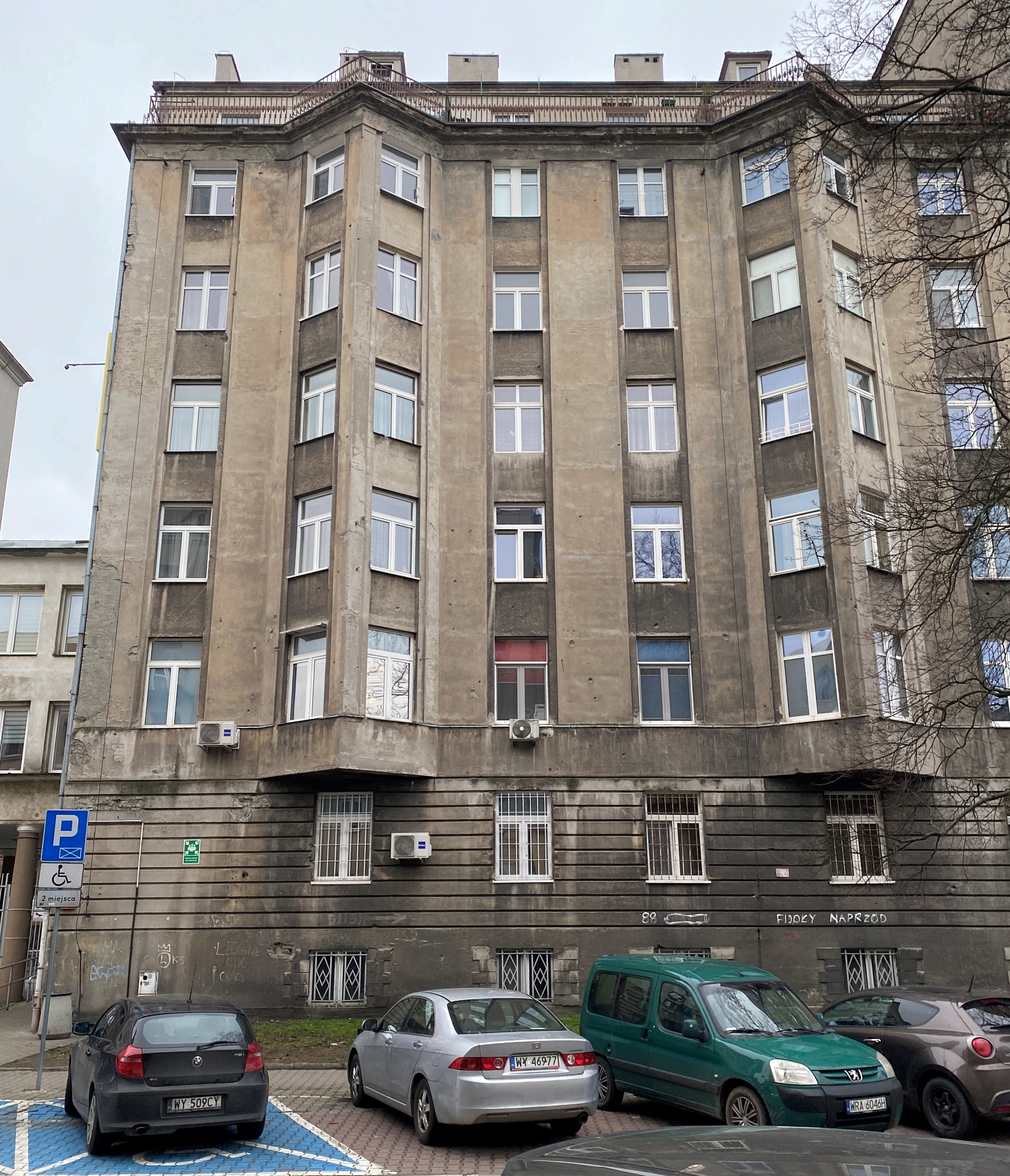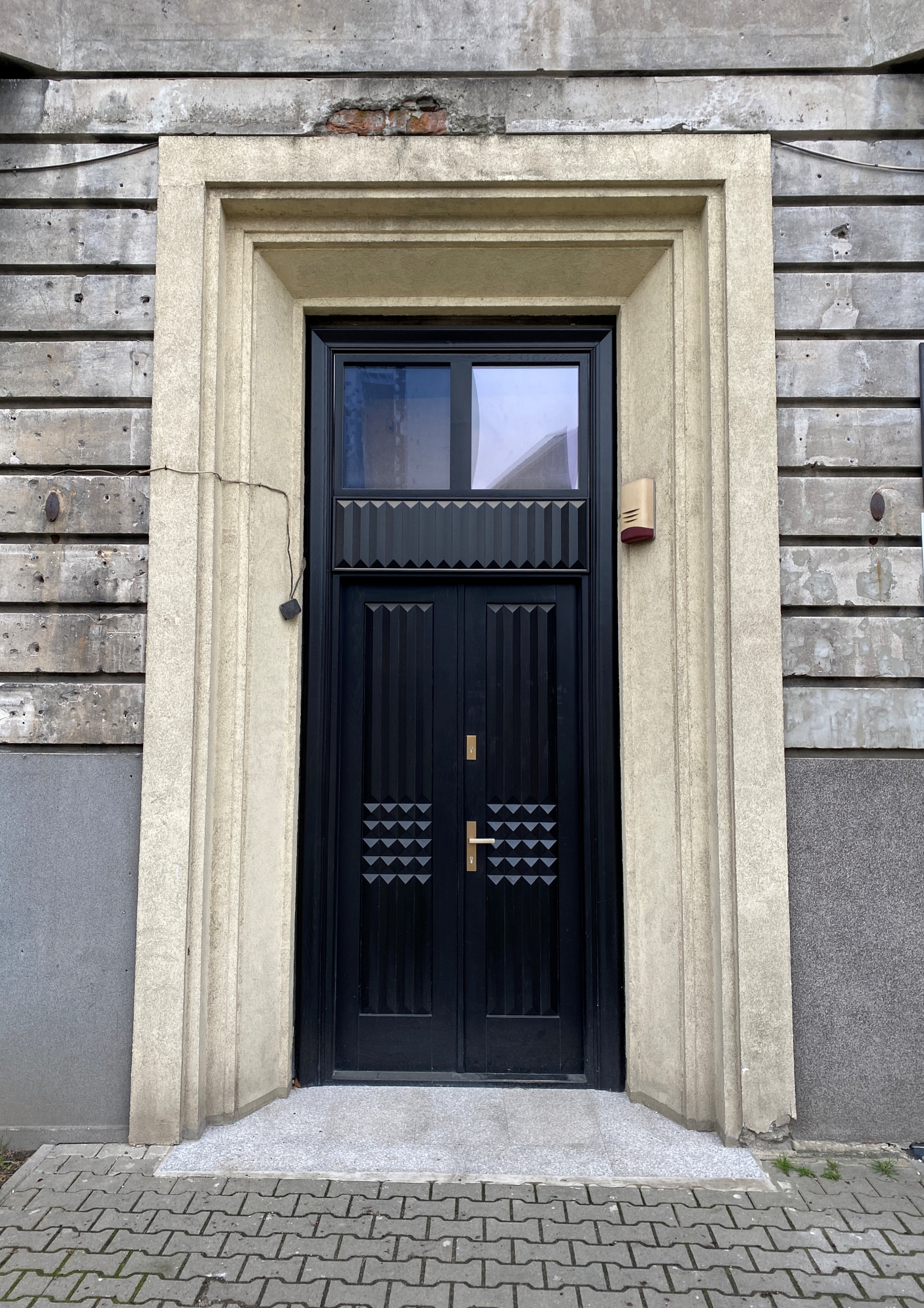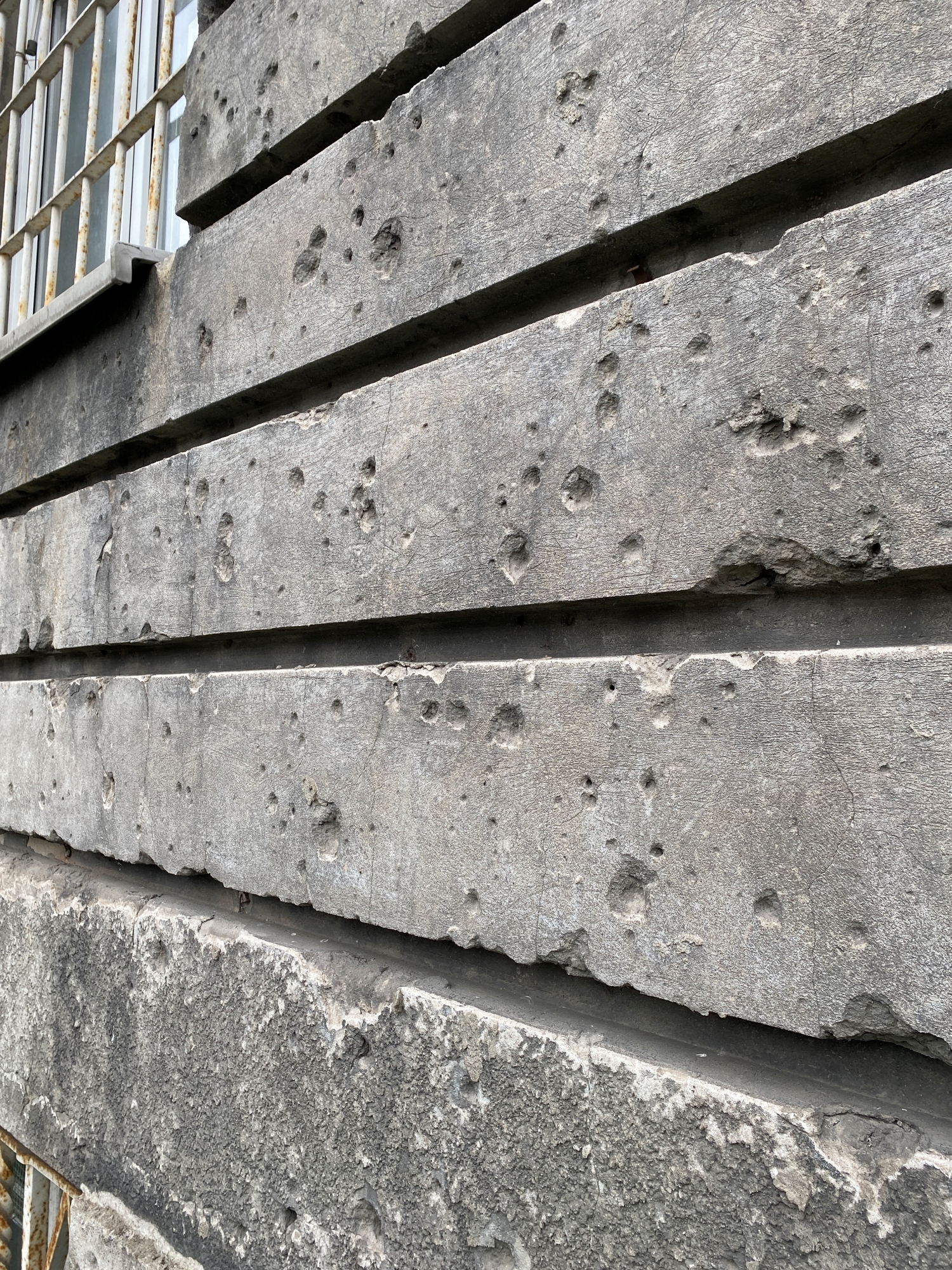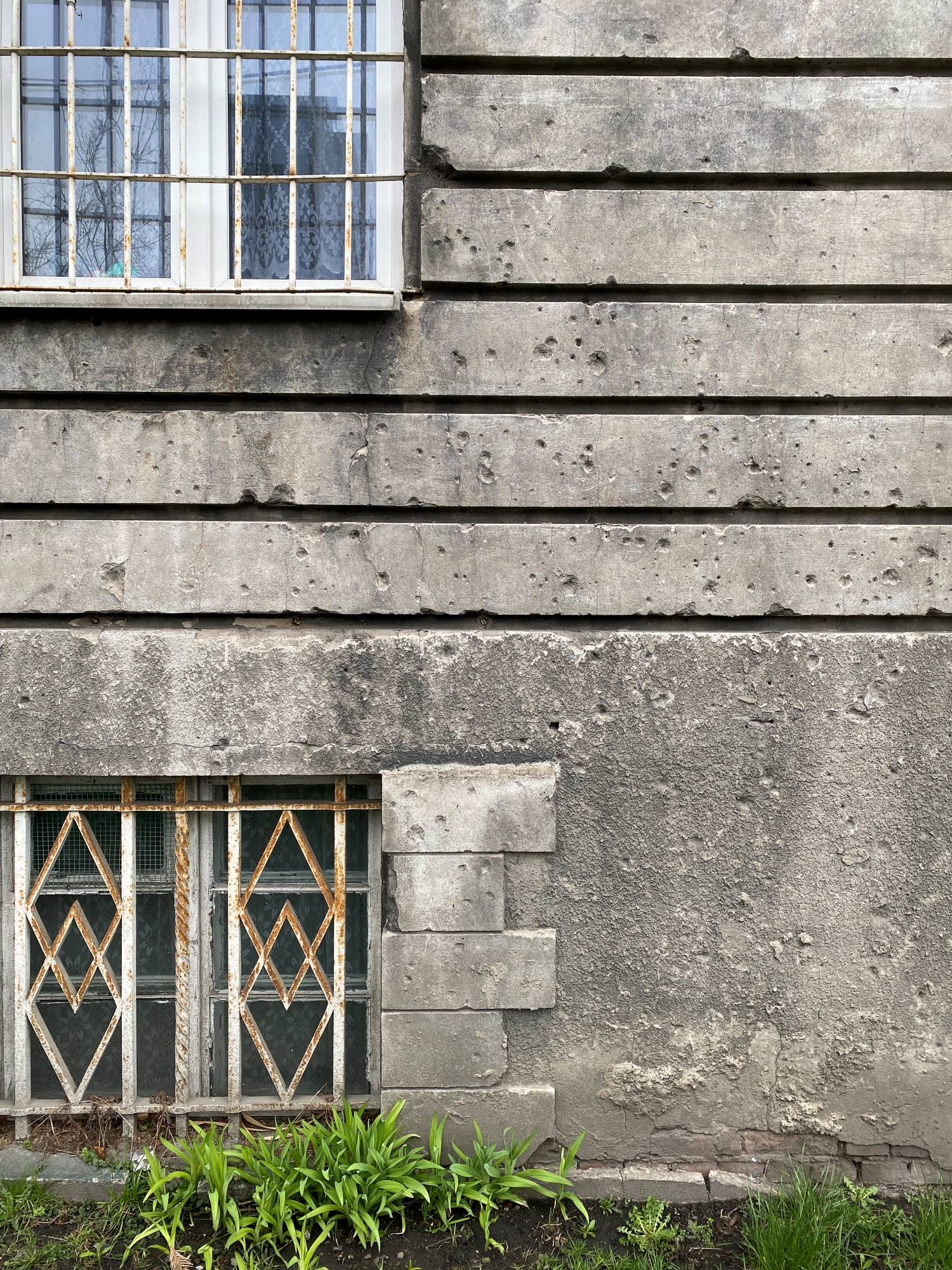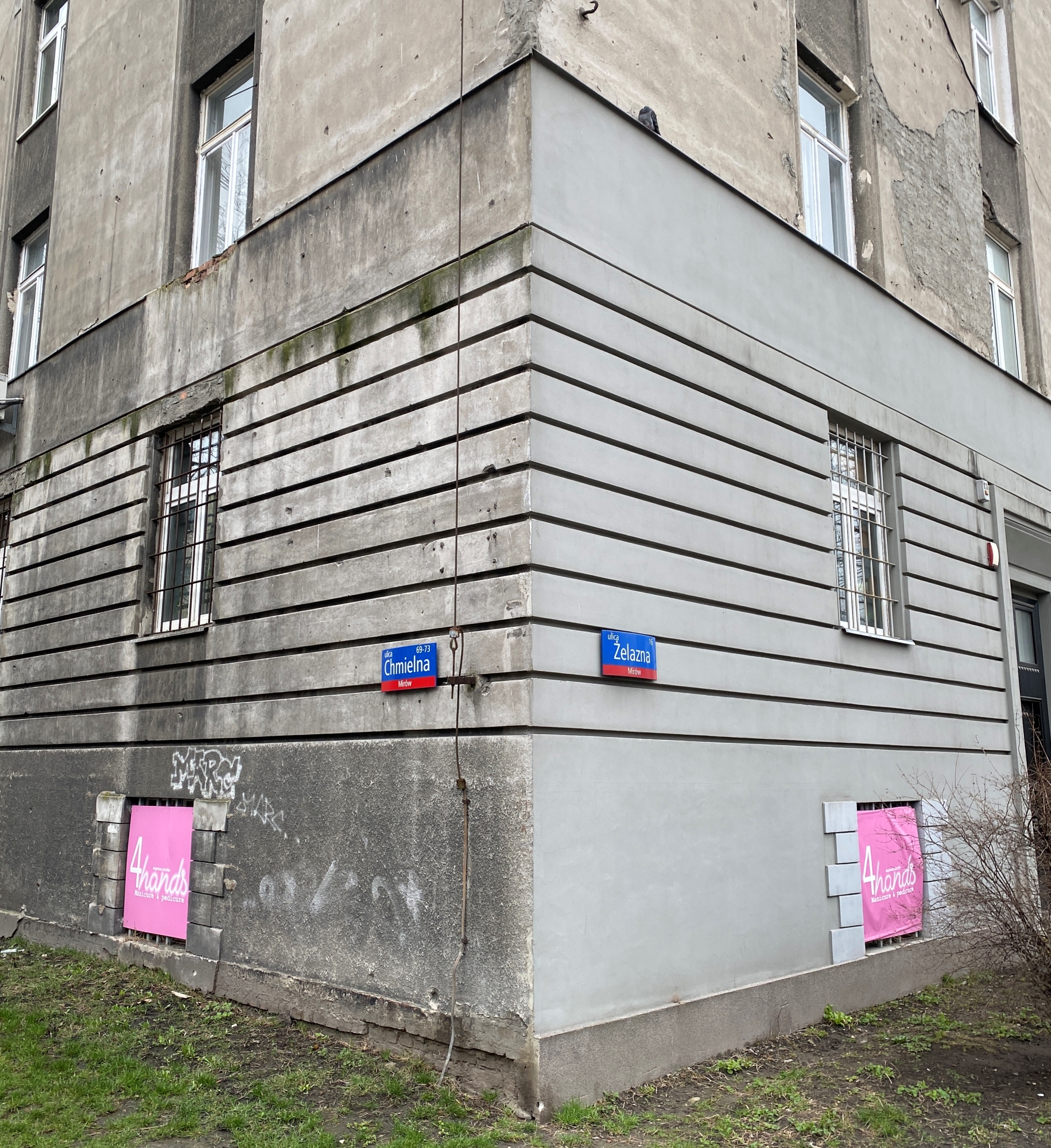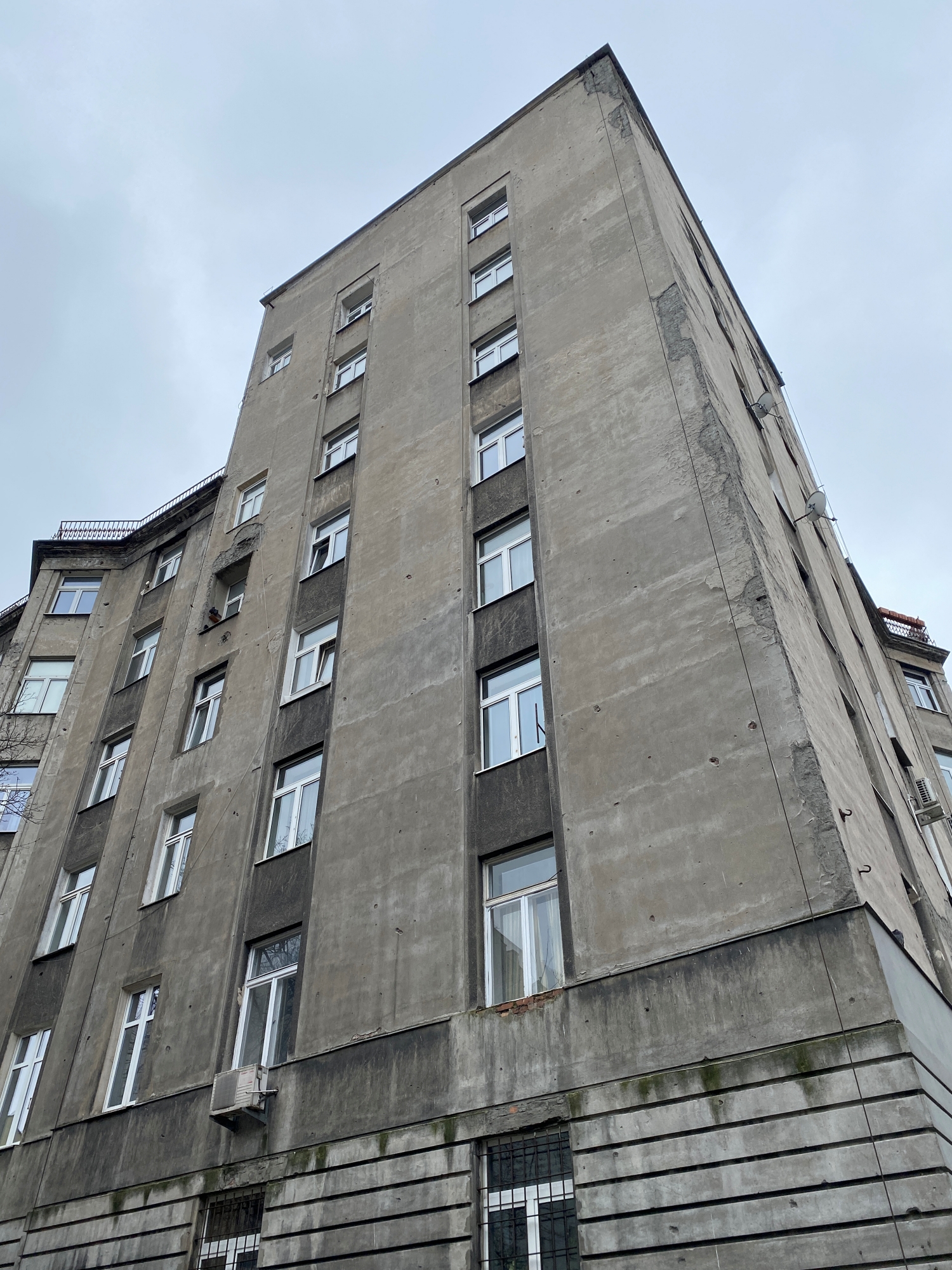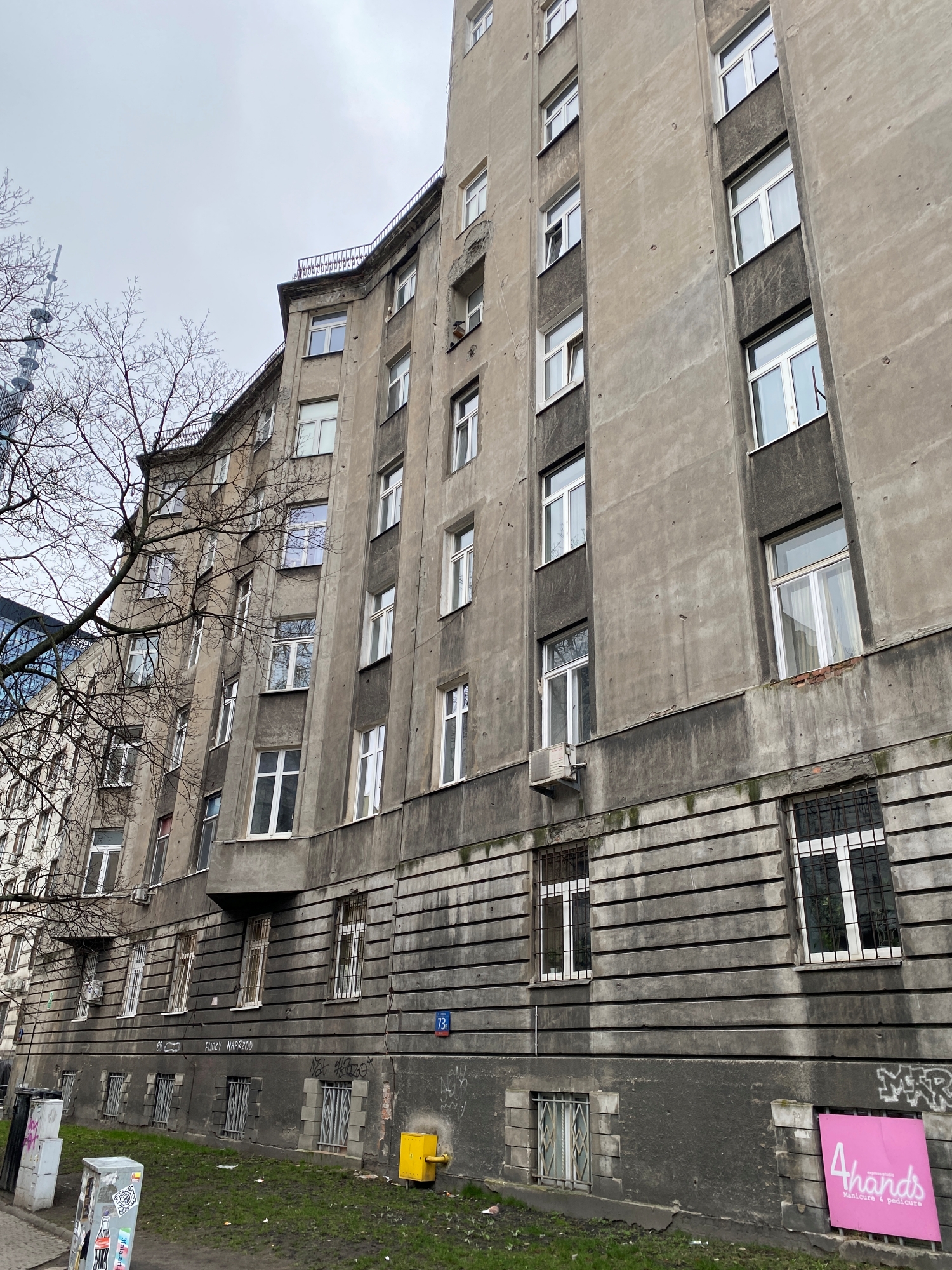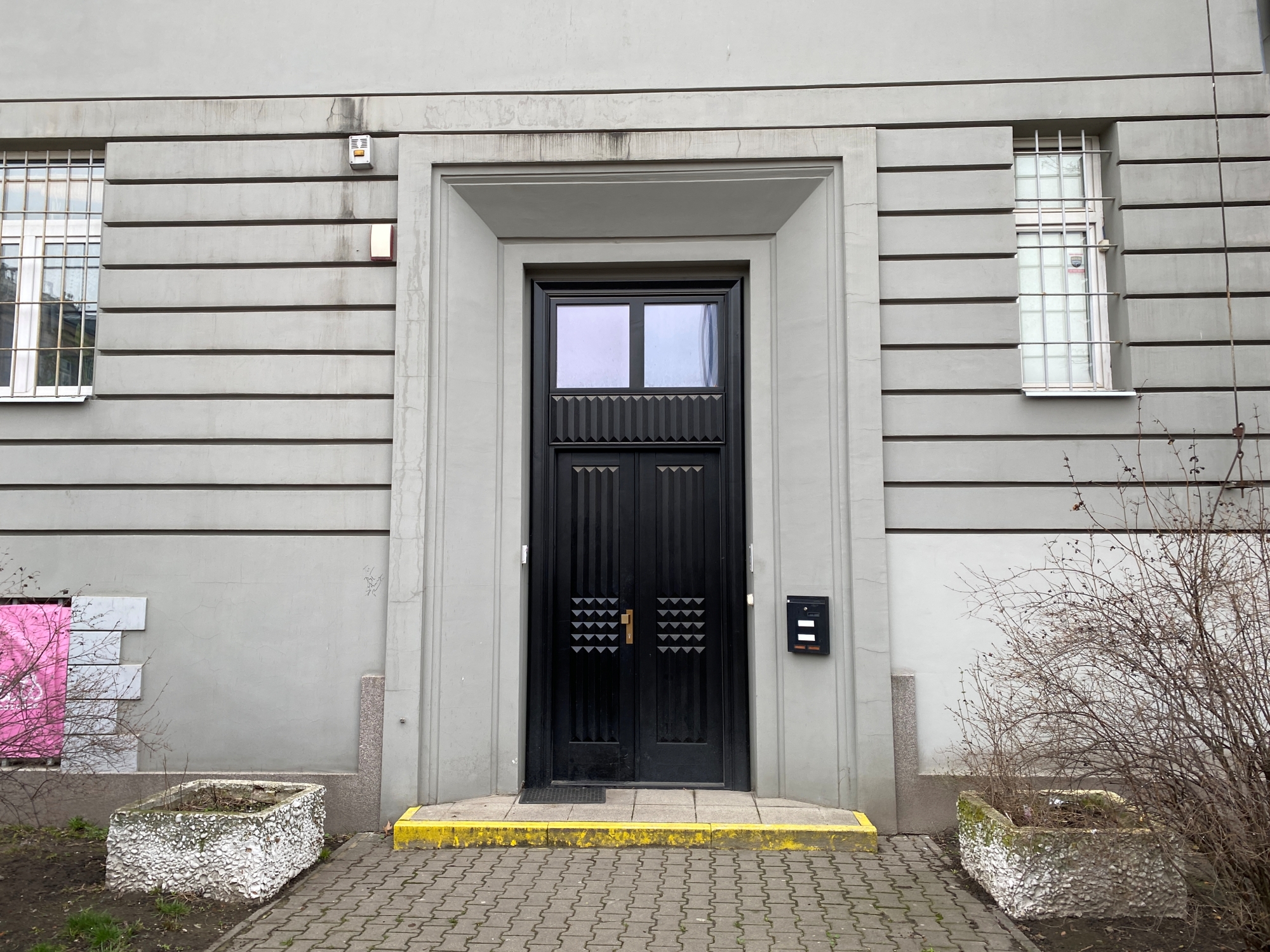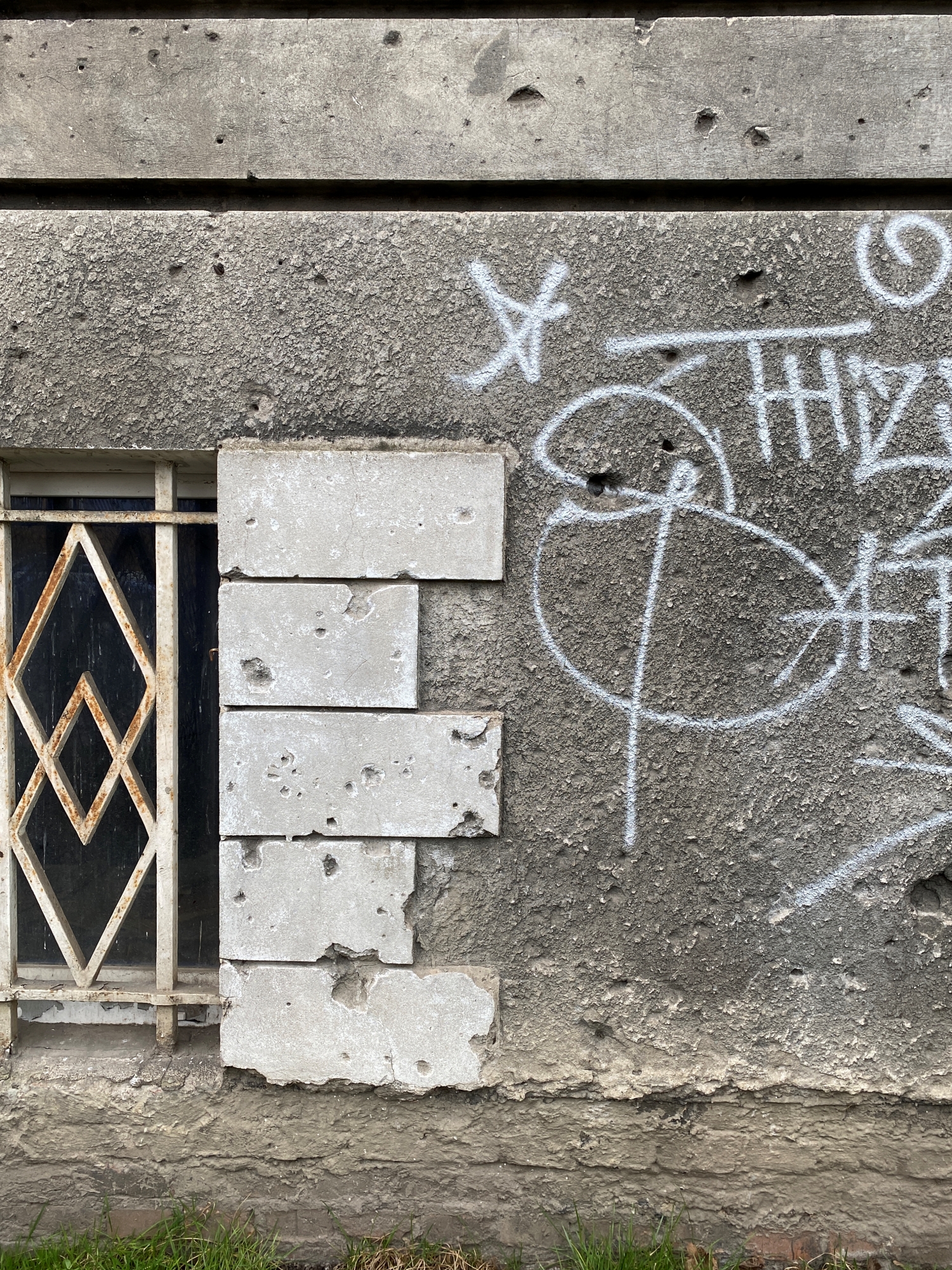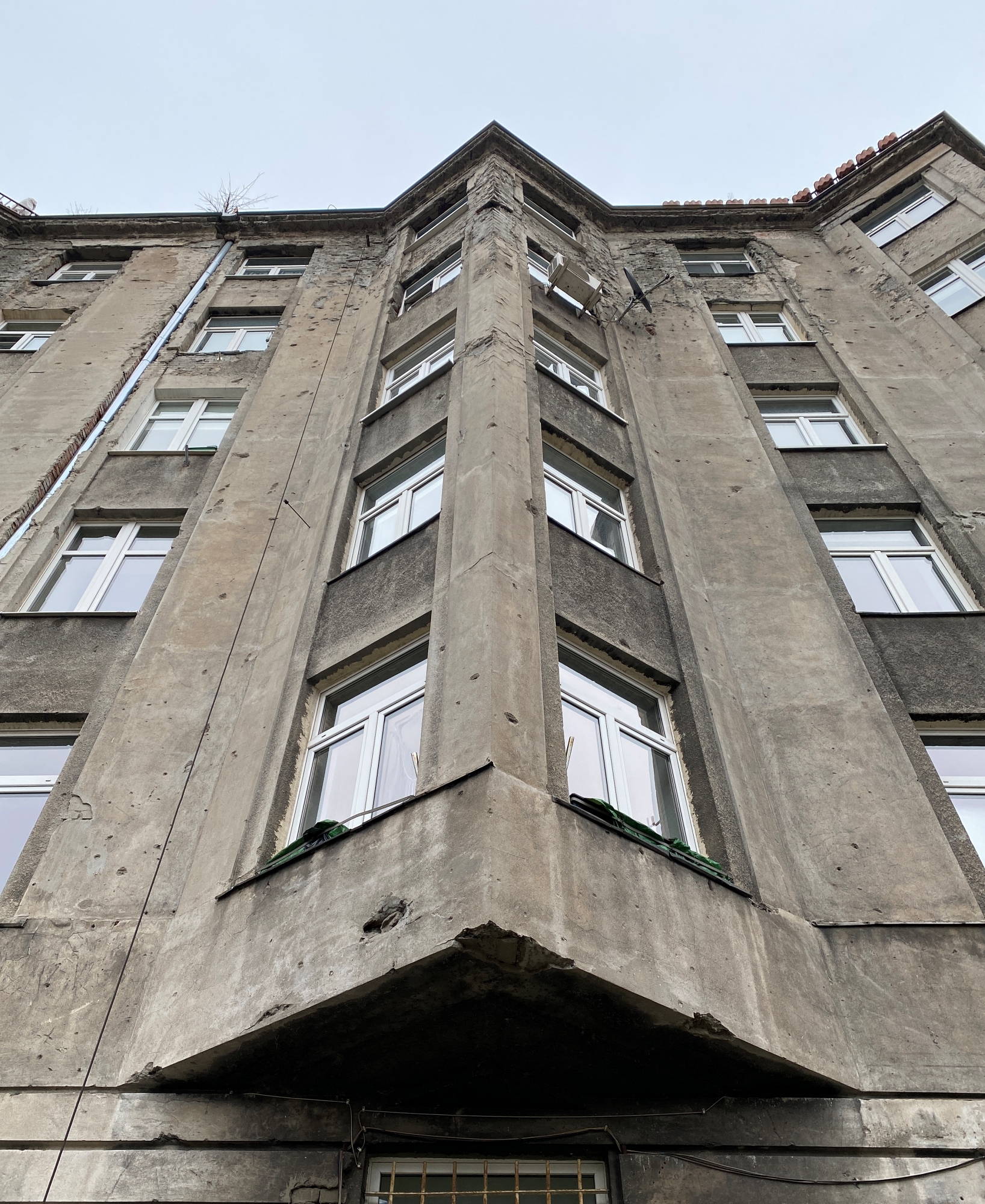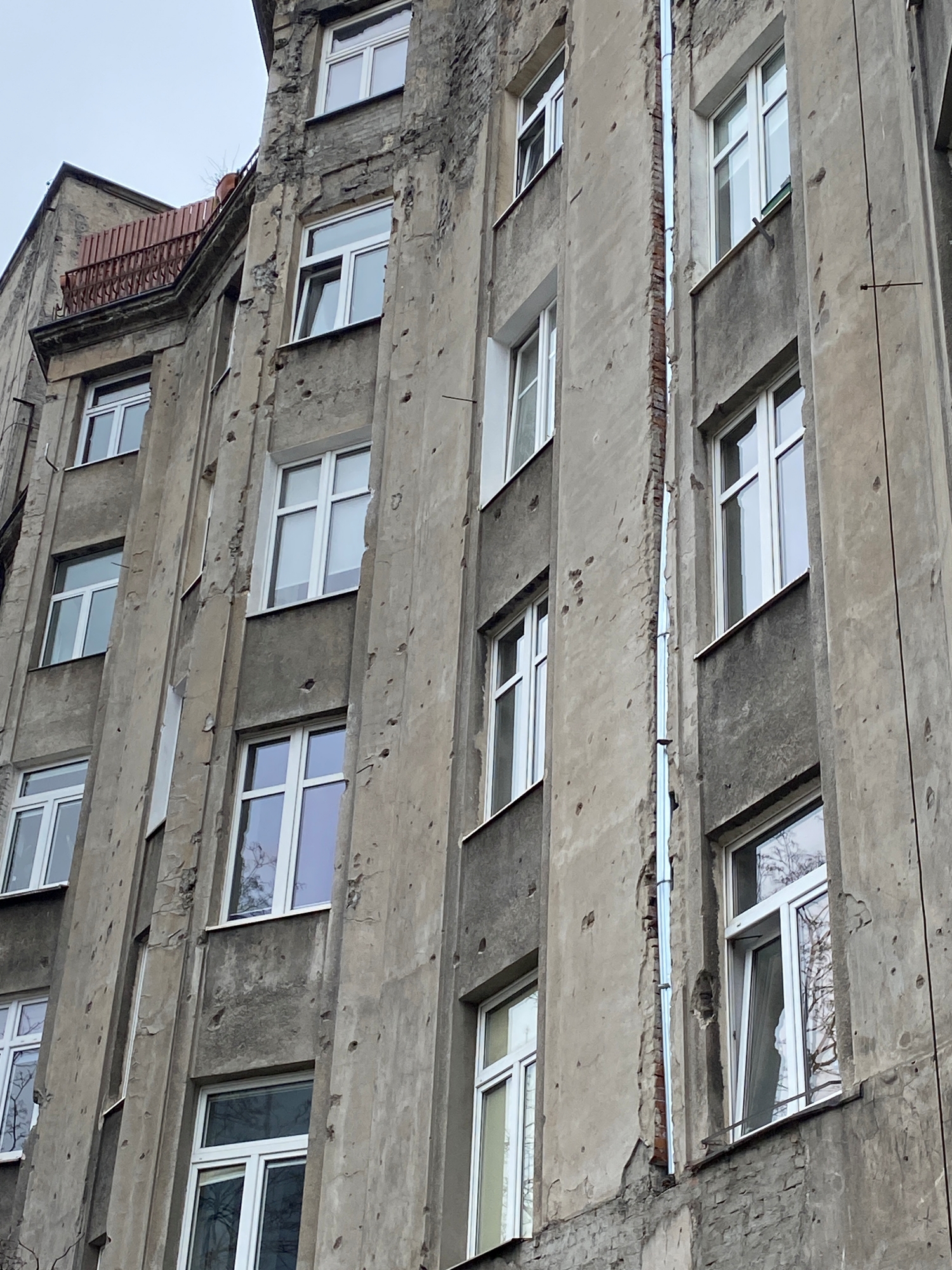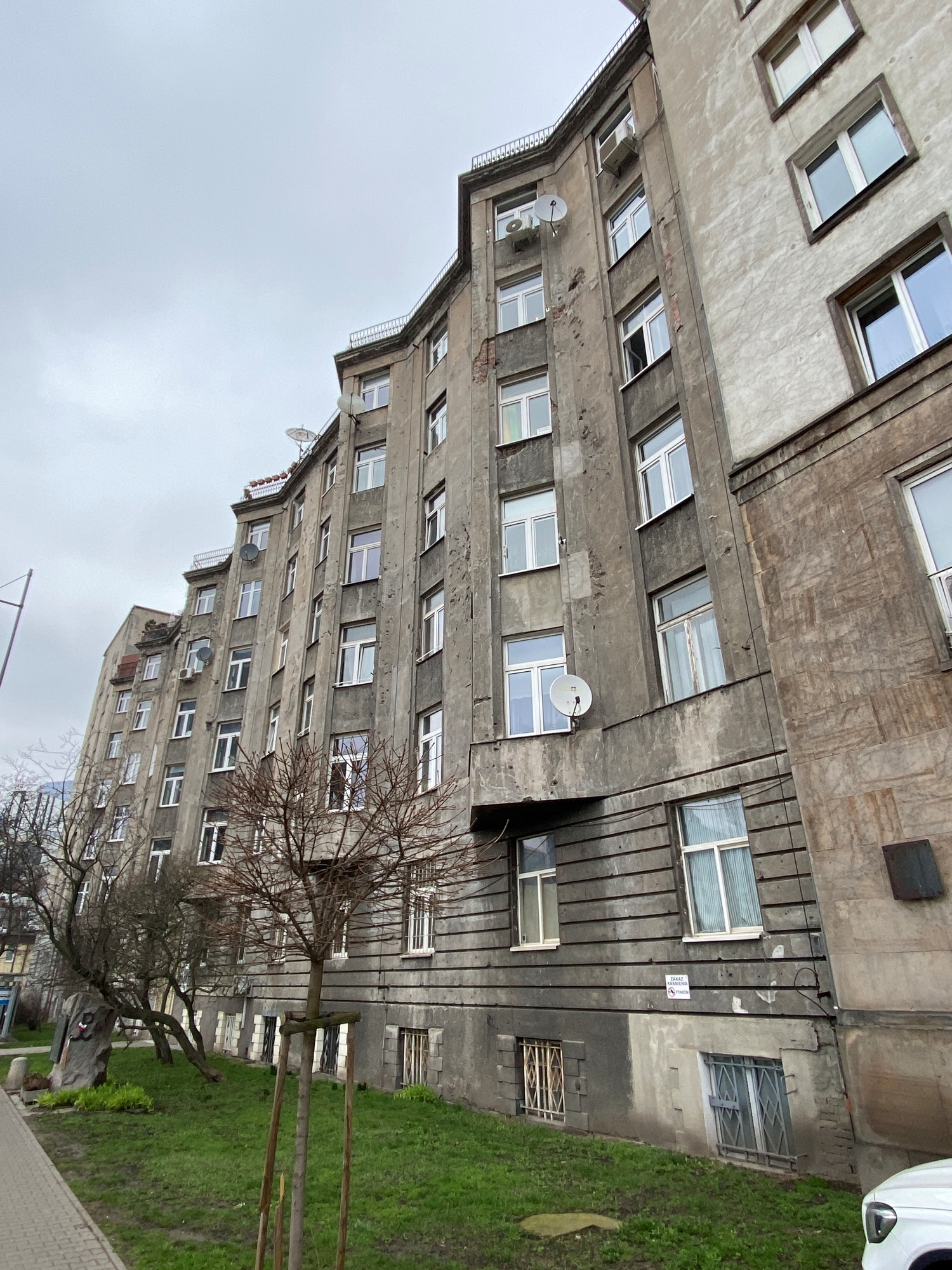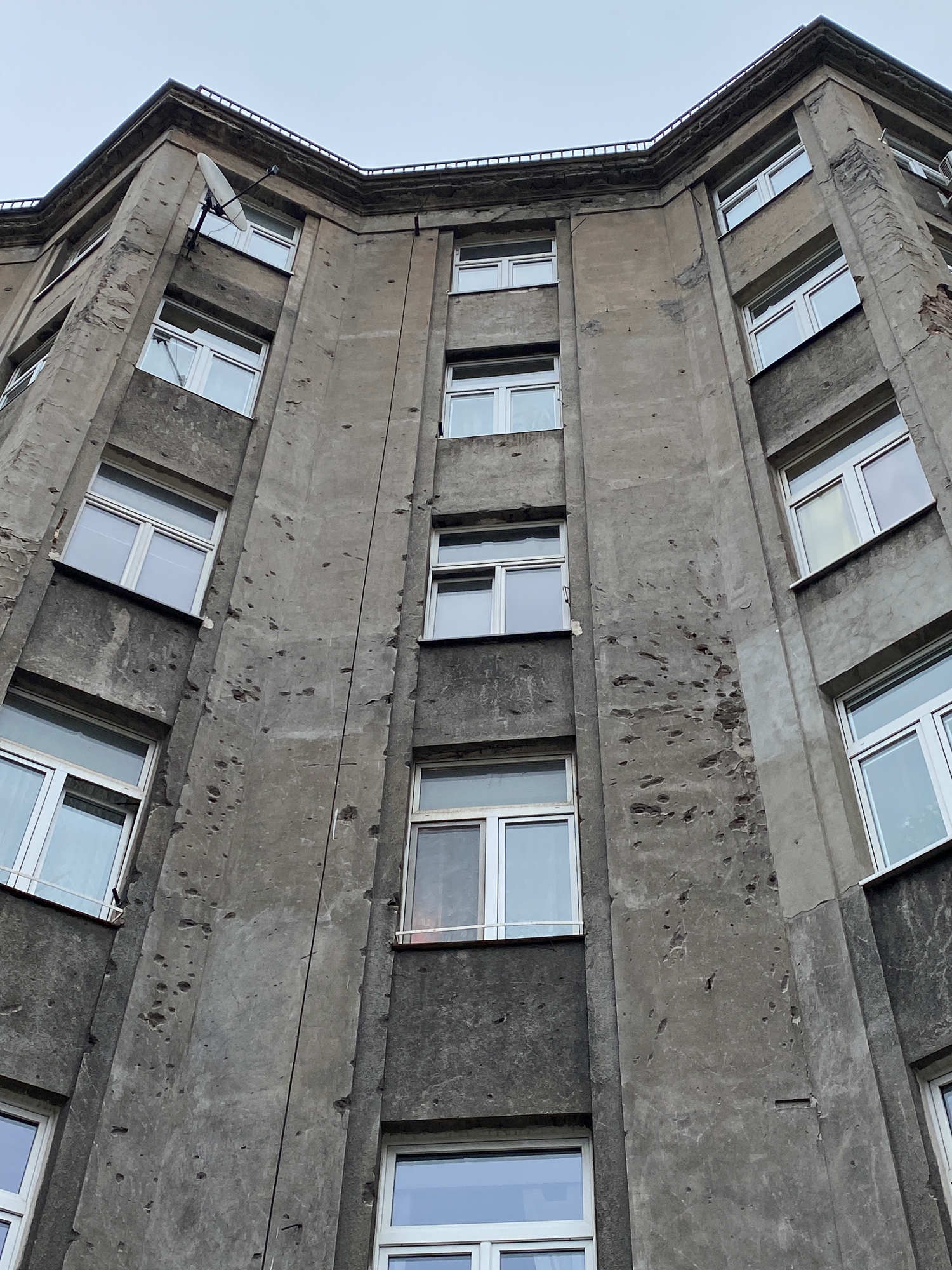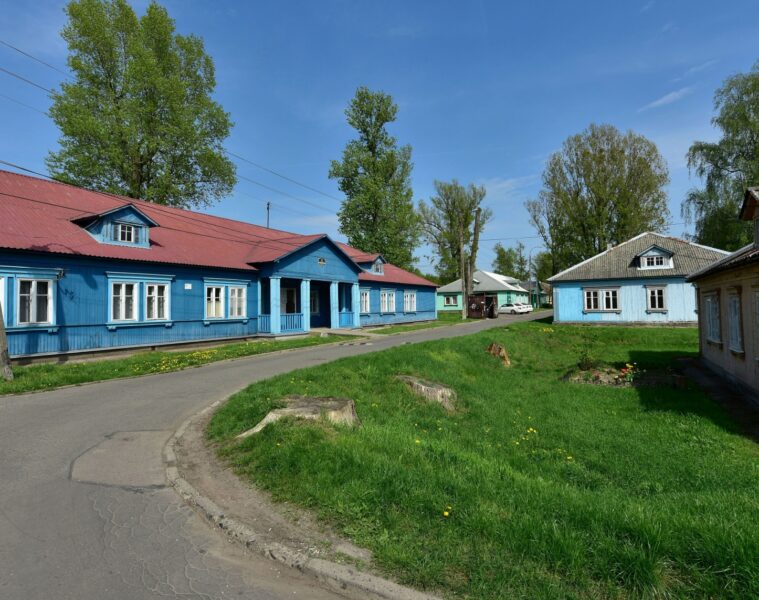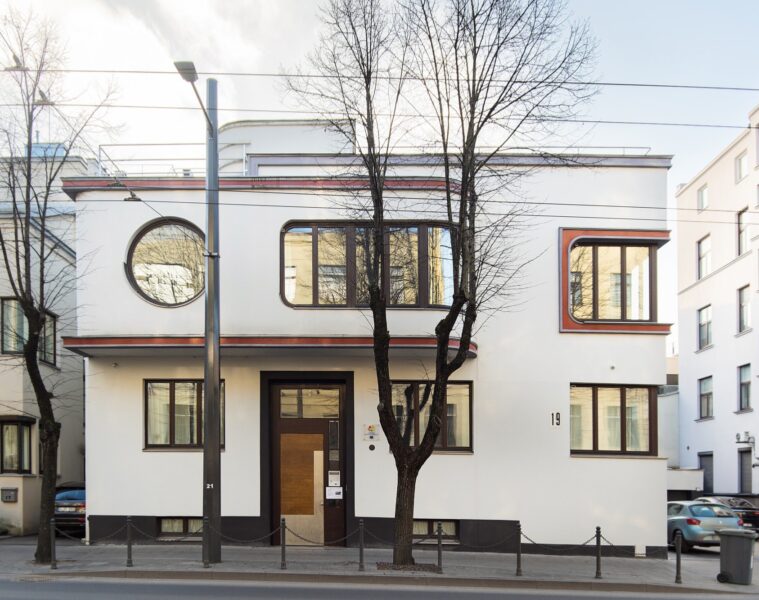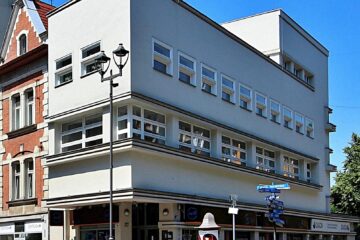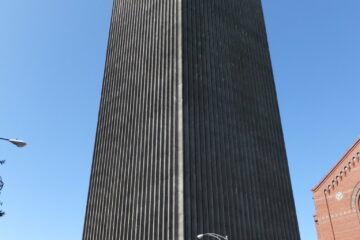The tenement house on the corner of Chmielna and Żelazna Streets was built for PKP employees in the 20th interwar period. It was known as the Railway House. During the Warsaw Uprising, this edifice – along with the Post Office Station located on the western side of Żelazna Street – was an important insurgent redoubt. It housed some of the uprising’s authorities and the quarters of the participants in the uprising, and the façade is still a reminder of those events, densely covered with bullet marks and shrapnel.
The modernist building was constructed in 1925-29 to a design by Adolf Inatowicz-Lubiański. It was part of a larger urban plan that included the construction of an apartment building with a large inner courtyard. This plan was only realised after the war, although only partially. The façade is characterised by triangular bay windows, above which are balconies with wrought-iron balustrades. The corner of the building is crowned by a 7-storey tower with a simple form and flat roof. A semi-circular staircase is located on the side of the courtyard. Despite its importance to the Polish side in the uprising, the Railway House was not destroyed, unlike the neighbouring Post Office Station.
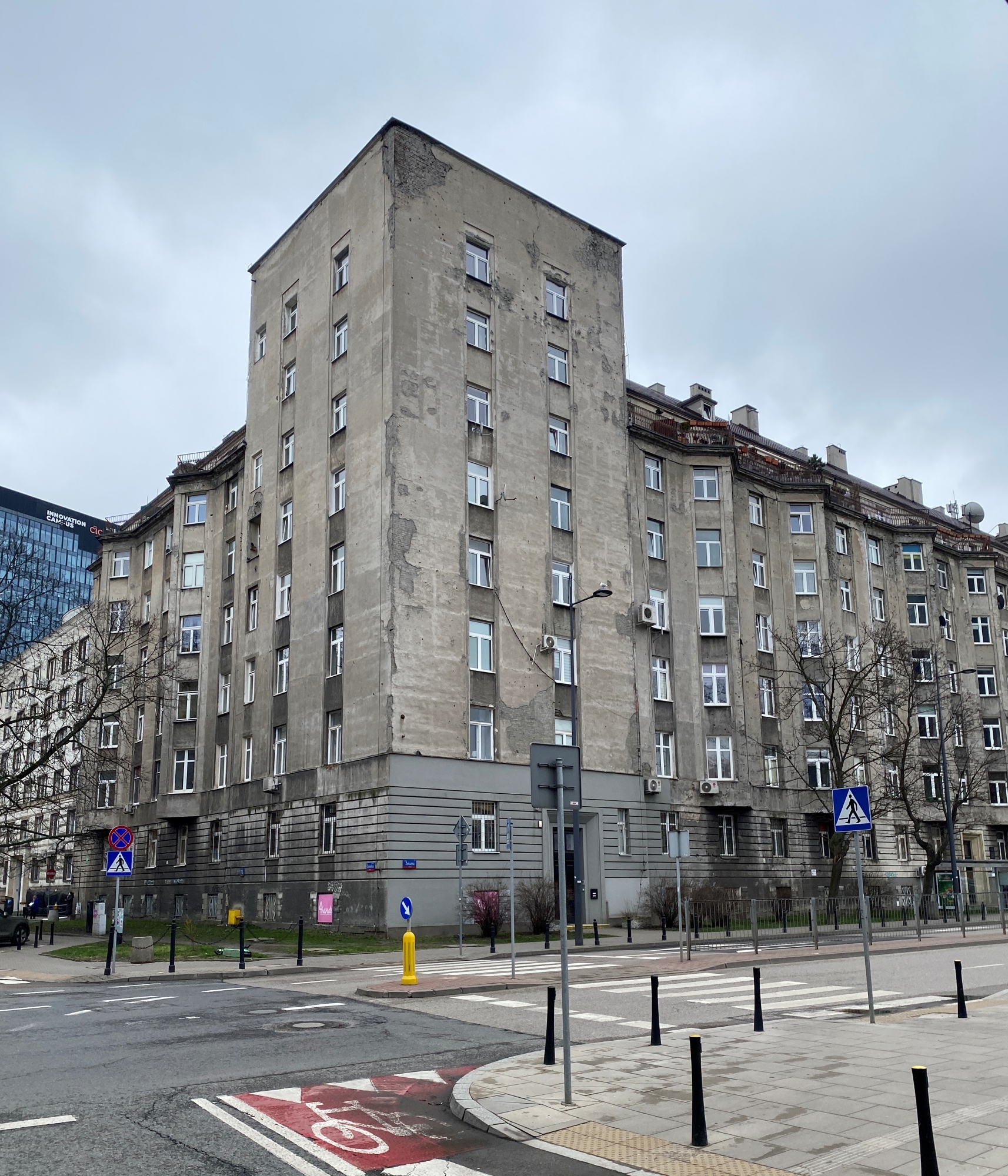
In August and September 1944, the tenement was defended by the most famous insurgent unit of the National Armed Forces – the “Warszawianka” company. It remained in its hands until the end of the uprising. The heroic defenders are commemorated by a plaque on the wall of the building. The Railway House was one of the tallest buildings in the area. It was located in a strategic place, as the cross-town railway line and the capital’s main thoroughfare, Jerozolimskie Avenue, ran alongside it. The building was therefore ideally suited as an insurgent redoubt. The insurgents’ capture of the building made it impossible for the Germans to move freely along Jerozolimskie Avenue.
The tenement house in 1938 and 2024. Source: National Archives in Warsaw and whiteMAD/Mateusz Markowski
Having seized the building, the insurgents immediately set about fortifying it. In addition to the insurgents’ quarters, the building housed a prisoner of war camp, a telephone exchange and a sanitary post. The legendary rtm. Witold Pilecki fought in the Railway House. Despite the constant shelling by the Germans from many directions, the insurgents managed to hold the building until the end. After the capitulation, the defenders of the building were taken prisoner.
In the spring of 2012, unexploded ordnance, most likely from the Warsaw Uprising, was found in the courtyard. It was secured and transported to the firing range in Kazuń, where it was detonated.
Source: 1944.pl, warszawskie-mozaiki.pl
Also read: tenement | Warsaw | Architecture in Poland | Curiosities | whiteMAD on Instagram


